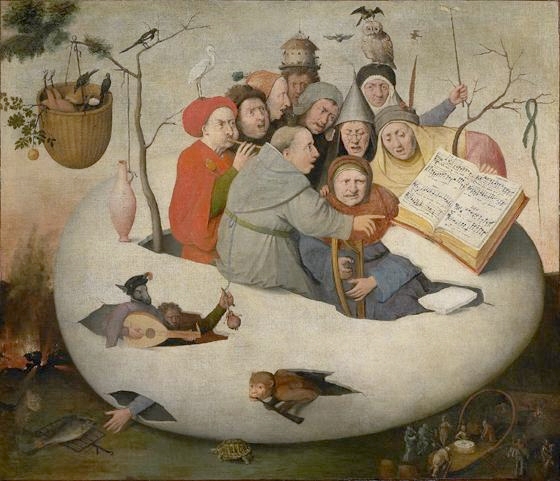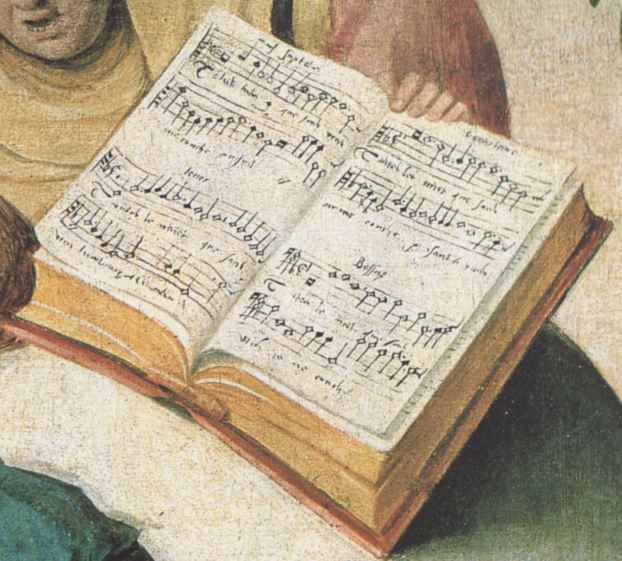













In the right hand panel of The Garden of Earthly Delights there is an interlinked series of images often referred to as the 'Hell of the Musicians'. At the base of a barbiton or other lute like instrument a book of music lies open. Also a choir of human souls led by a demon choirmaster appear to be singing the music written on the bottom of a man crushed under the barbiton. Can this this music be identified? I asked my colleague, the musicologist Joscelyn Godwin to appraise this "music". His reply leads me to understand that this is only made to look like music but has no real musical structure.
I believe it is made-up notation with no musical identity. Some of the reasons, in brief:
1. The C-clef is on a space. Clefs are always on lines. Other staffs lack clefs altogether.
2. The notes are not identifiable mensural types. By Bosch's time, hollow noteheads were used for minims and semibreves, but it would have been difficult for the artist to delineate those on this scale. He seems to have used a single brush-stroke for each note, sometimes with a tail and sometimes without. So the rhythm, if any, makes no sense.
3. There are two voices on each stave. Late 15c. notation (with rare exceptions for keyboard music) uses one voice per stave.
4. If two polyphonic voices are intended, the rhythmic difficulties mentioned prevent any correct alignment.
5. As far as one can judge by simply comparing notes in vertical alignment, there is no sense to the harmony of the two voices.
6. One might argue that plainsong is intended, in view of the non-mensural noteheads and the four-line staff. If so, the melody is very uncharacteristic of plainsong, because it has too many repeated notes and triadic patterns. These occur in plainsong, but only in a context of generally conjunct motion.
So I think the artist was simply saying "Music" and not reproducing a real piece.
Another painting associated with Bosch has better depicted real music. This is the Concert in an Egg. This was painted by a later follower of Bosch, probably in the mid 16th century (1550-1575). It is presumed he was copying a painting by Bosch which has been lost as there is a provisional sketch possibly by Bosch himself. The painting is now in the Musée des Beaux-Arts in Lille.

When we see the music close up, it is obviously actual playable music.

A colleague of mine has suggested that it may be a setting of 'Toutes les nuits que sans vous je me couche'. There are versions of this set by Lassus and de Crecquillon during this period.






